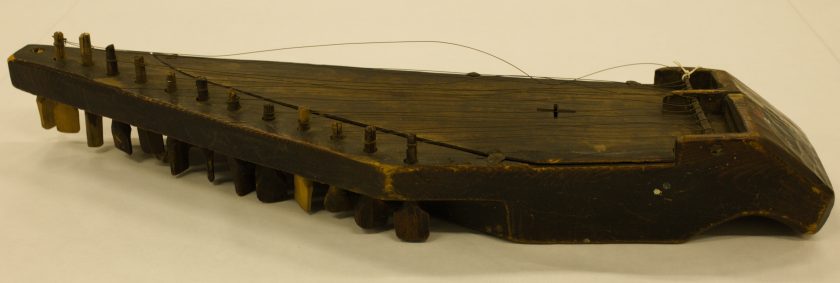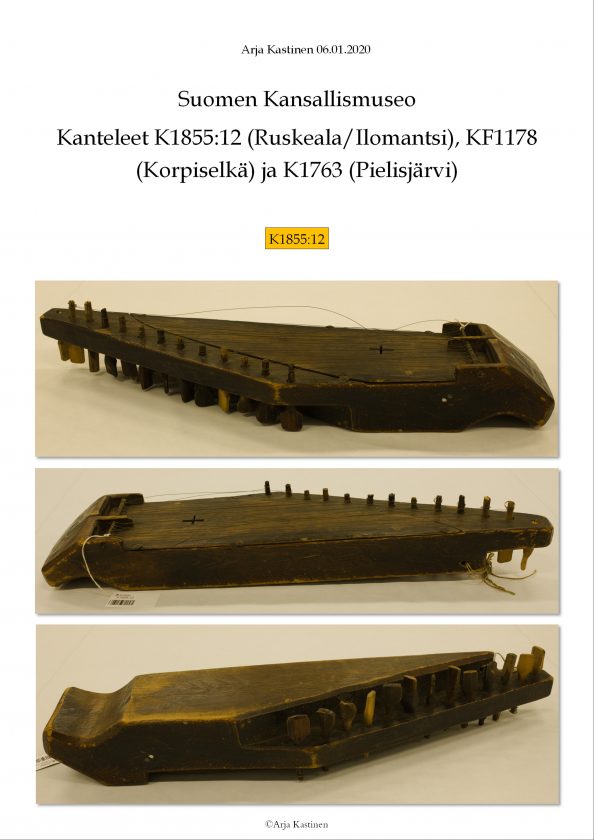New information of three 19th century Karelian hollow kanteles in the National Museum of Finland
News
January 06, 2020
The new research of three Karelian 19th century hollow kanteles is now published as a PDF, but unfortunately only in Finnish. There are lots of detailed photos, though, for those who are interested in seeing them.
These instruments are stored at the National Museum of Finland. Two of the instruments are hollowed out from the top and they thus represent the more southern model. The third one is hollowed out from below and doesn’t have the bottom – it represents the more northern model. All these three instruments are very interesting individuals, not least because, exceptionally, there is also information about the musicians and even some information about the music they were played on.
Kantele K1855:12 was bought by collector and researcher Axel August Borenius in 1877 in Ilomantsi, North-Karelia. The instrument had been made in Ruskeala, Ladoga Karelia in 1860. The kantele was bought from an old man called Niilo Suihko who also played the 5- and 7-string kanteles. His nephew (who had the same name, but was called “Mr. Suihko”) played the 9-, 12- and 27-string kanteles. Borenius wrote down their scales and fingerings. The kantele has 13 brass strings.

Kantele K1855:12 in the National Museum of Finland.
Kantele KF1178 was bought in 1893 in Korpiselkä, Border Karelia. It is hollowed out from the top, has 12 strings and a metal bridge in front of the tuning pegs. It was made in 1875 by Hilppa Vornanen (the father of the famous kanteleplayer Antero Vornanen). The large Vornanen family was famous for its runosingers, hunters and wise men. Folk music researcher Armas Otto Väisänen recorded two dance tunes from Hilppa Vornanen in 1916 played on the 12-string kantele.

Kantele KF1178 in the National Museum of Finland.
K1763 is a very light 12-string kantele, hollowed out from below and bought in Pielisjärvi, North-Karelia. According to the text written inside, the kantele was made in winter 1840 by a half-blind man Turunen.

Kantele K1763 in the National Museum of Finland.
The PDF (in Finnish) which contains all photos, dimensions and history:

